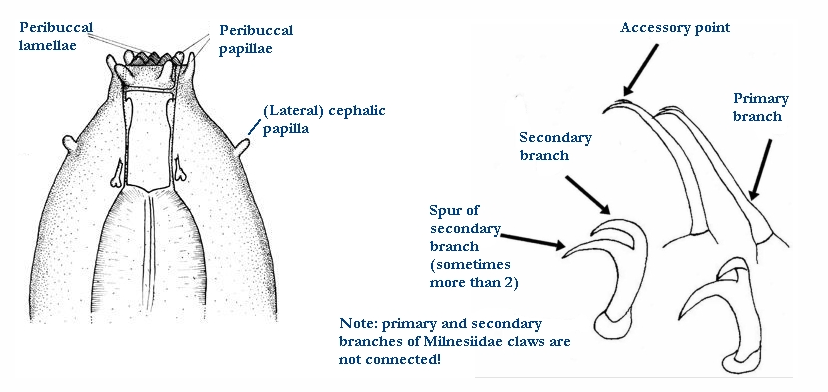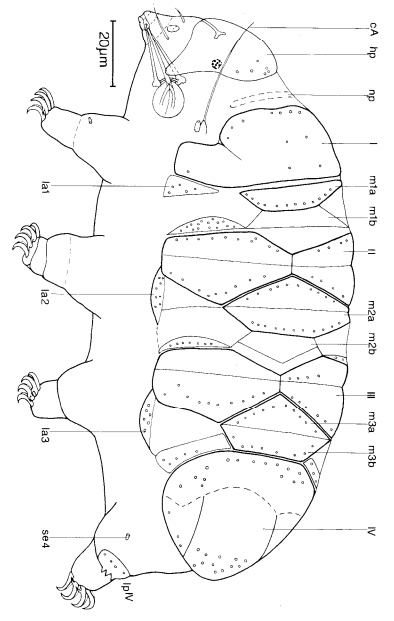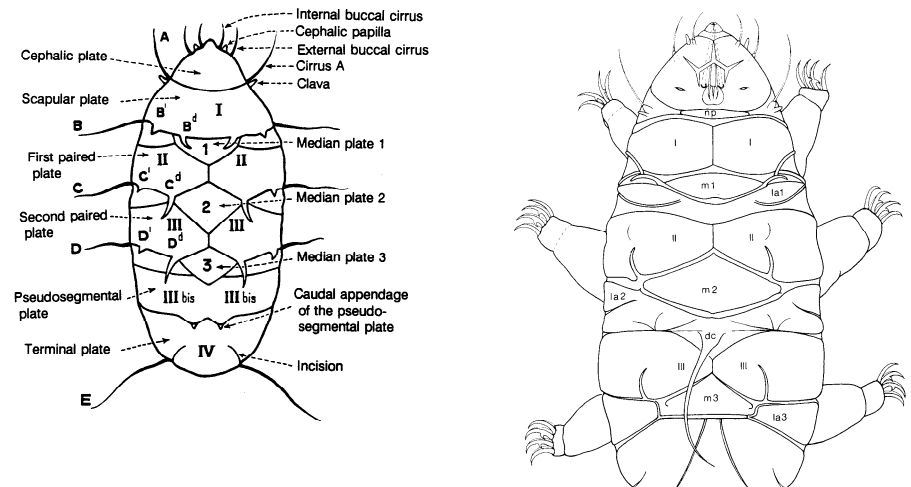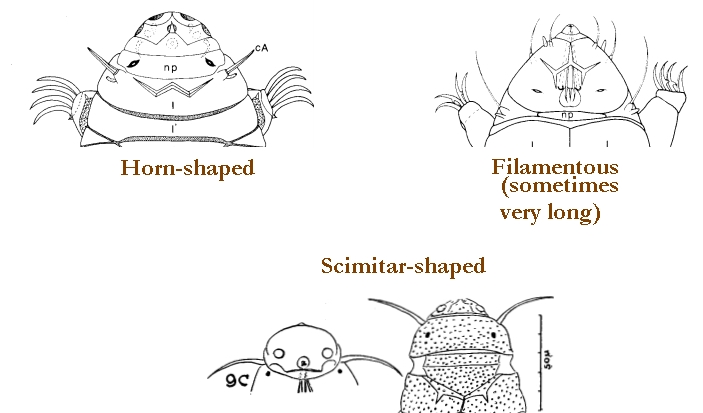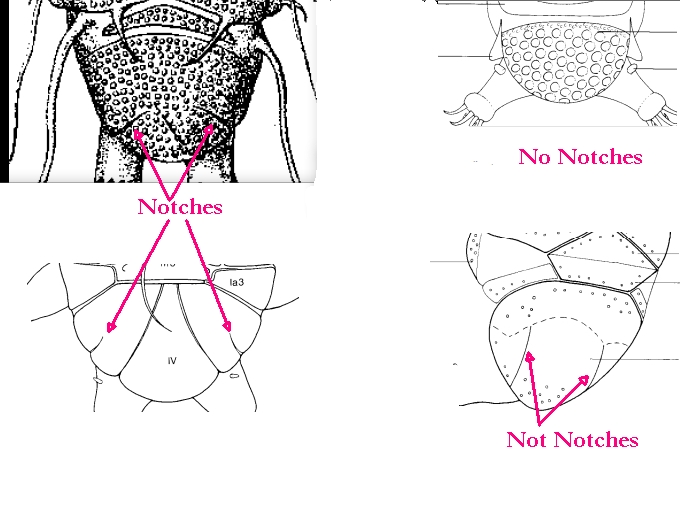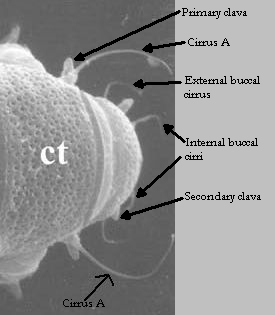Genus description from Kristensen 1982: “An extremely slender calohypsibid with reduced legs and claws. Mouth opening large with 14-16 lamellae. A complete set of teeth in the buccal lumen; annulated buccal tube. Apophyses ventrally and dorsally hook-shaped and attached to the stylet retractor muscles. Claws of the Calohypsibius-type, but with lunules. Malpighian tubules ovoid with a small stalk. […] Discussion: The genus Eohypsibius has a buccal apparatus related to Pseudodiphascon (Christenberry & Higgins, 1979) and a claw system similar to Calohypsibius. The annulation of the buccal tube can only be seen after clearing the animals in polyvinyl lactophenol.”
Additional genus notes from Pilato & Binda 1996: “…the furca of the stylets has an unusual shape. We noted that: a) the two branches are slightly arched; b) their apices are not clearly swollen.” Need modification by Trygvadóttir & Kristensen 2011.
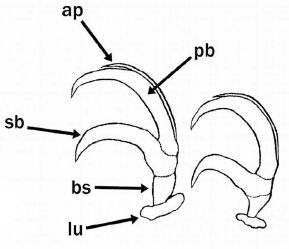
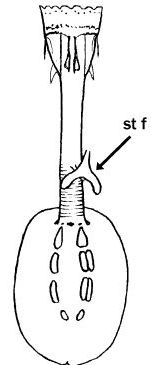
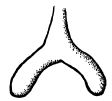
Citations:
Kristensen RM. 1982. New aberrant eutardigrades from homothermic springs on Disko Island,
West Greenland. In Proceedings of the Third International Symposium on Tardigrada, Tennessee (pp. 203 – 220).
Pilato G, Binda MG. 1996. Additional remarks to the description of some genera of eutardigrades. Bollettino delle Sedute della Accademia Gioenia di Scienze Naturali in Catania. 29 (351): 33-40.





